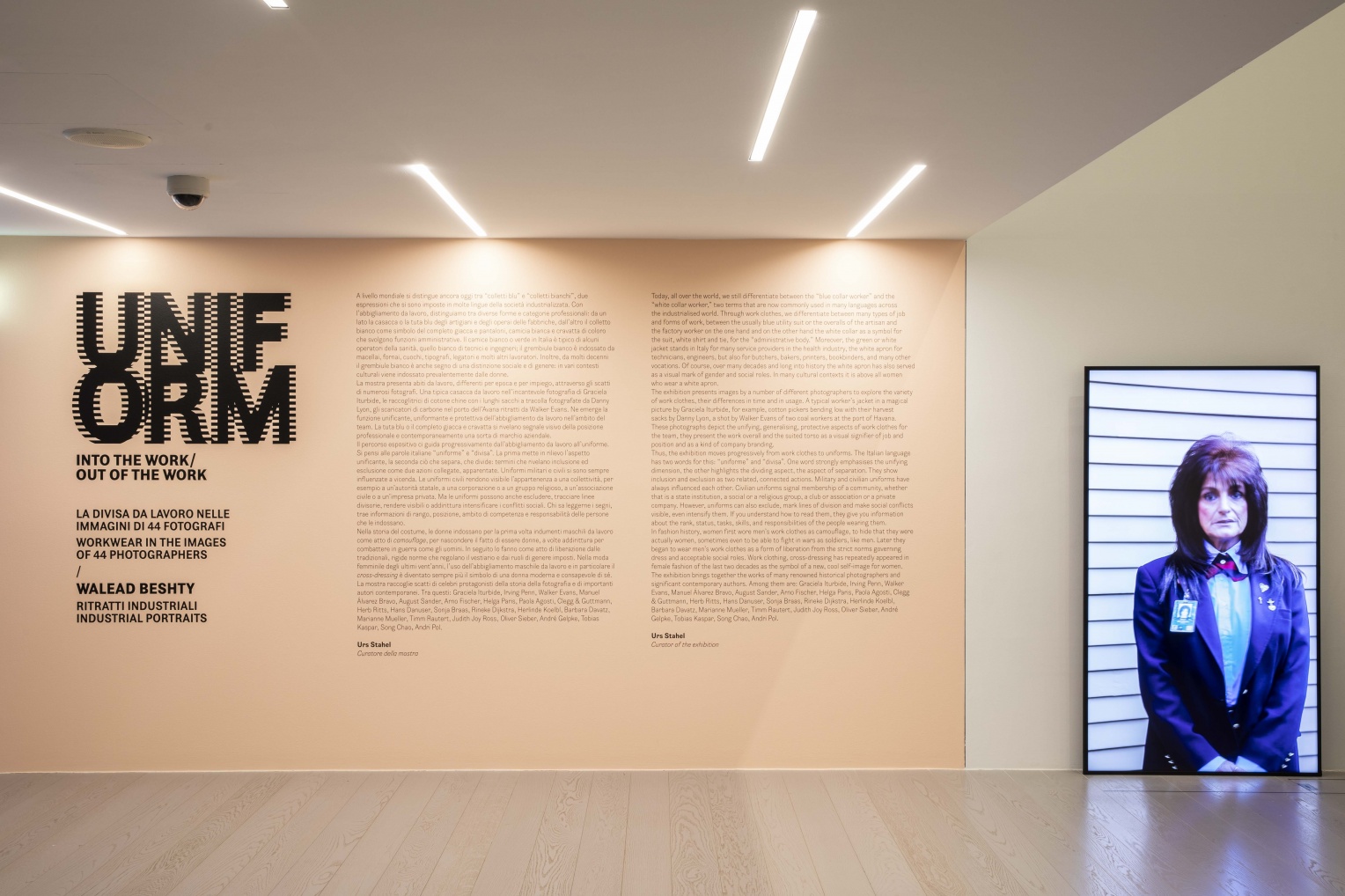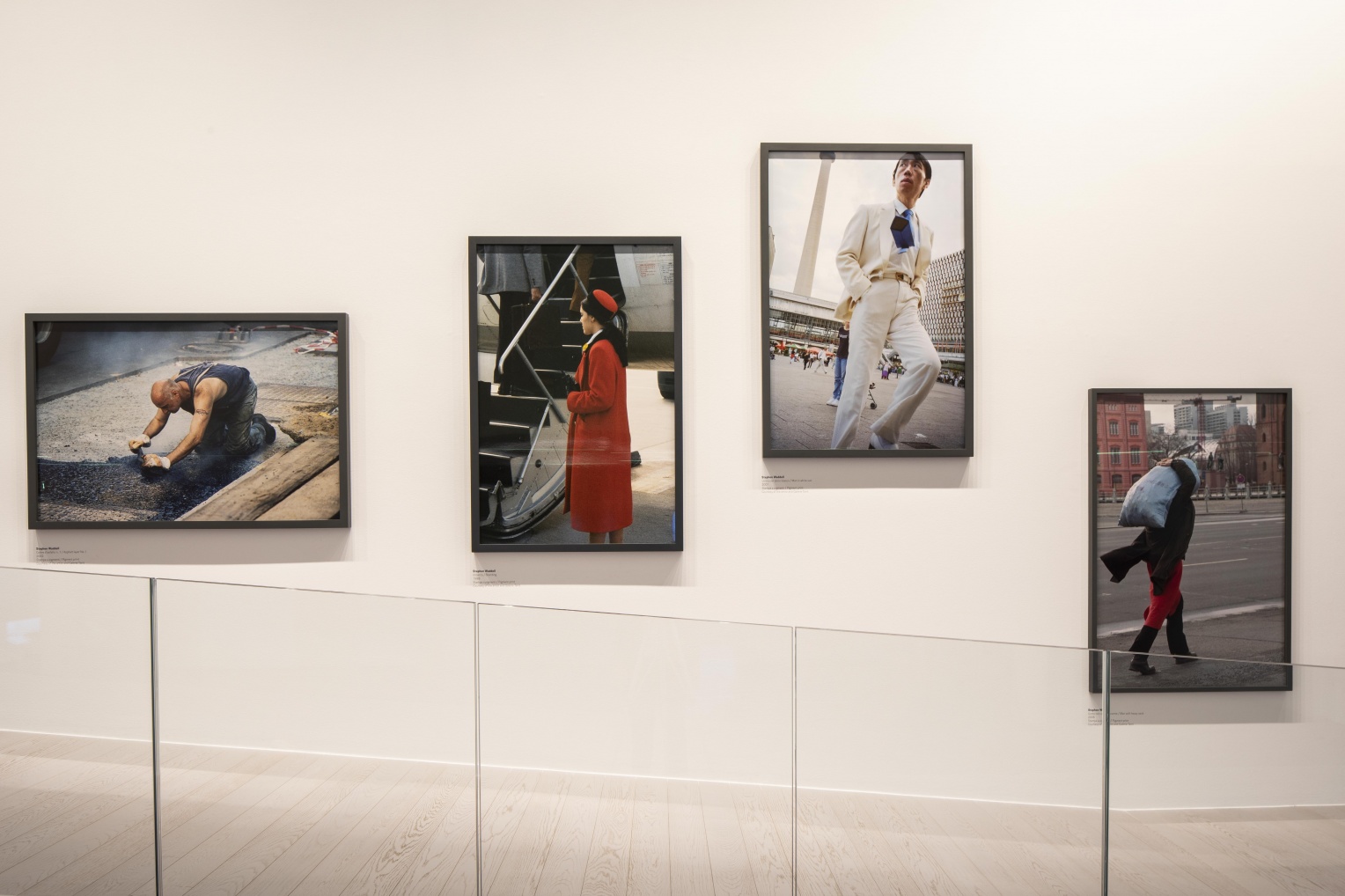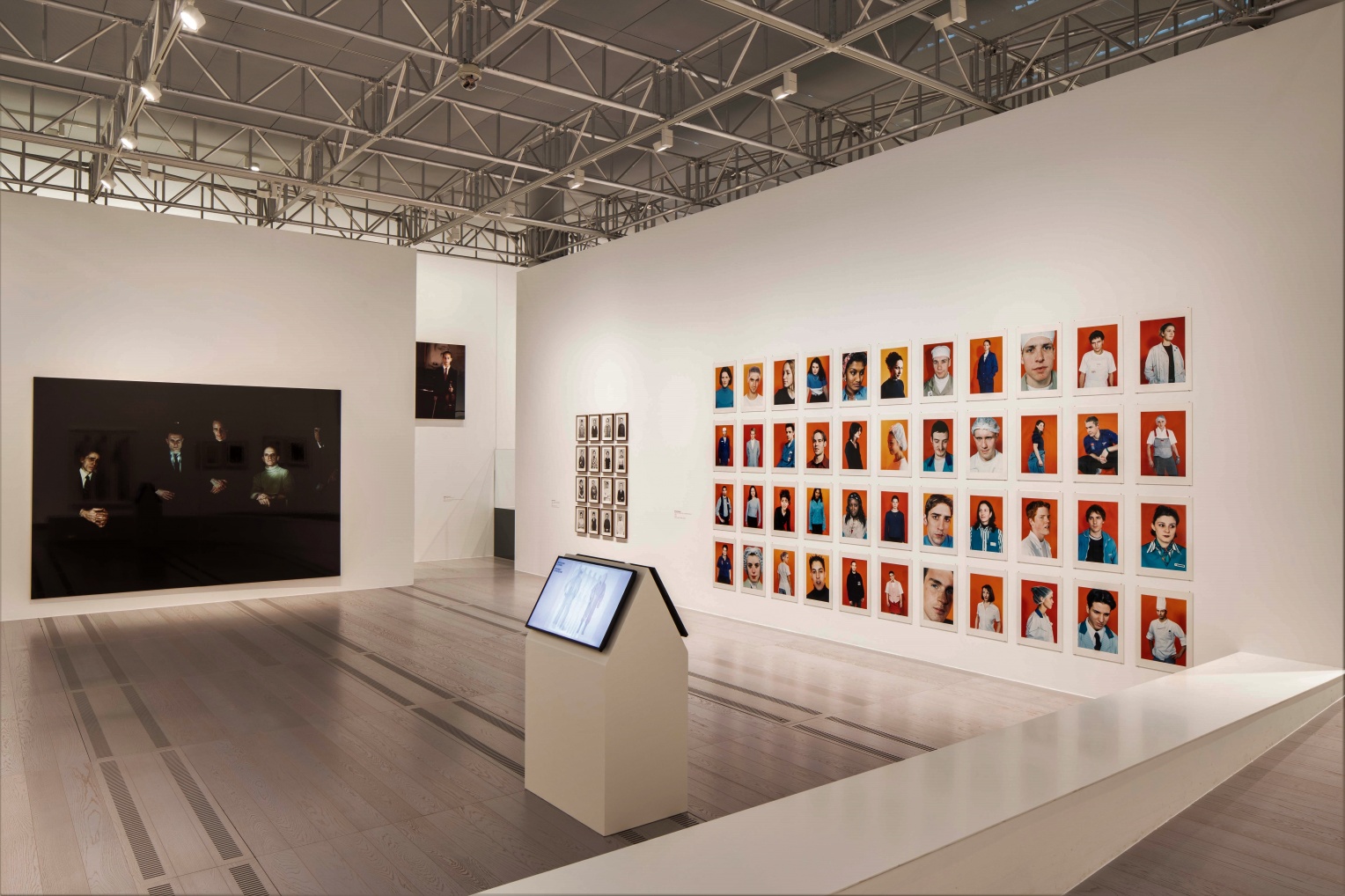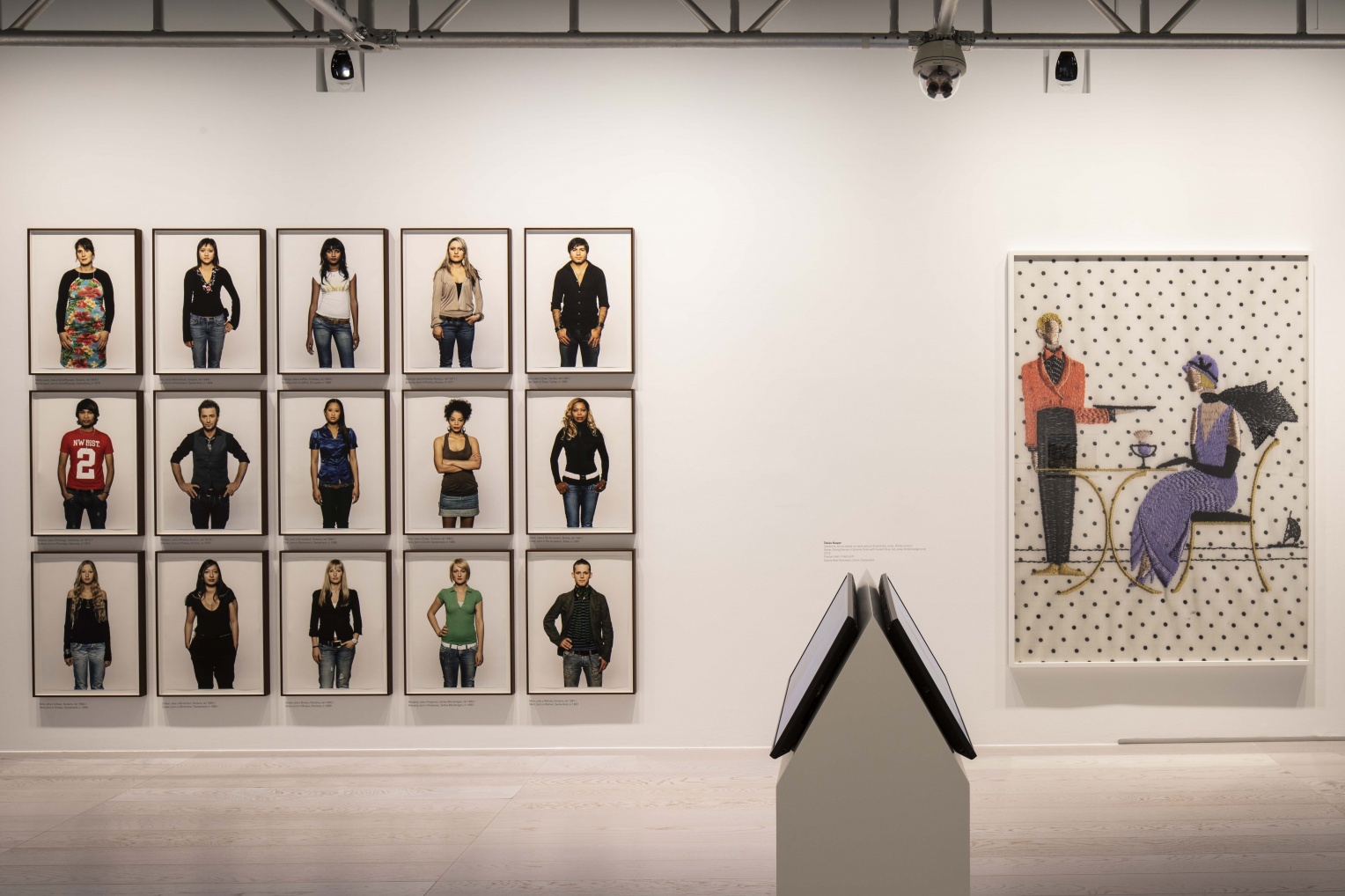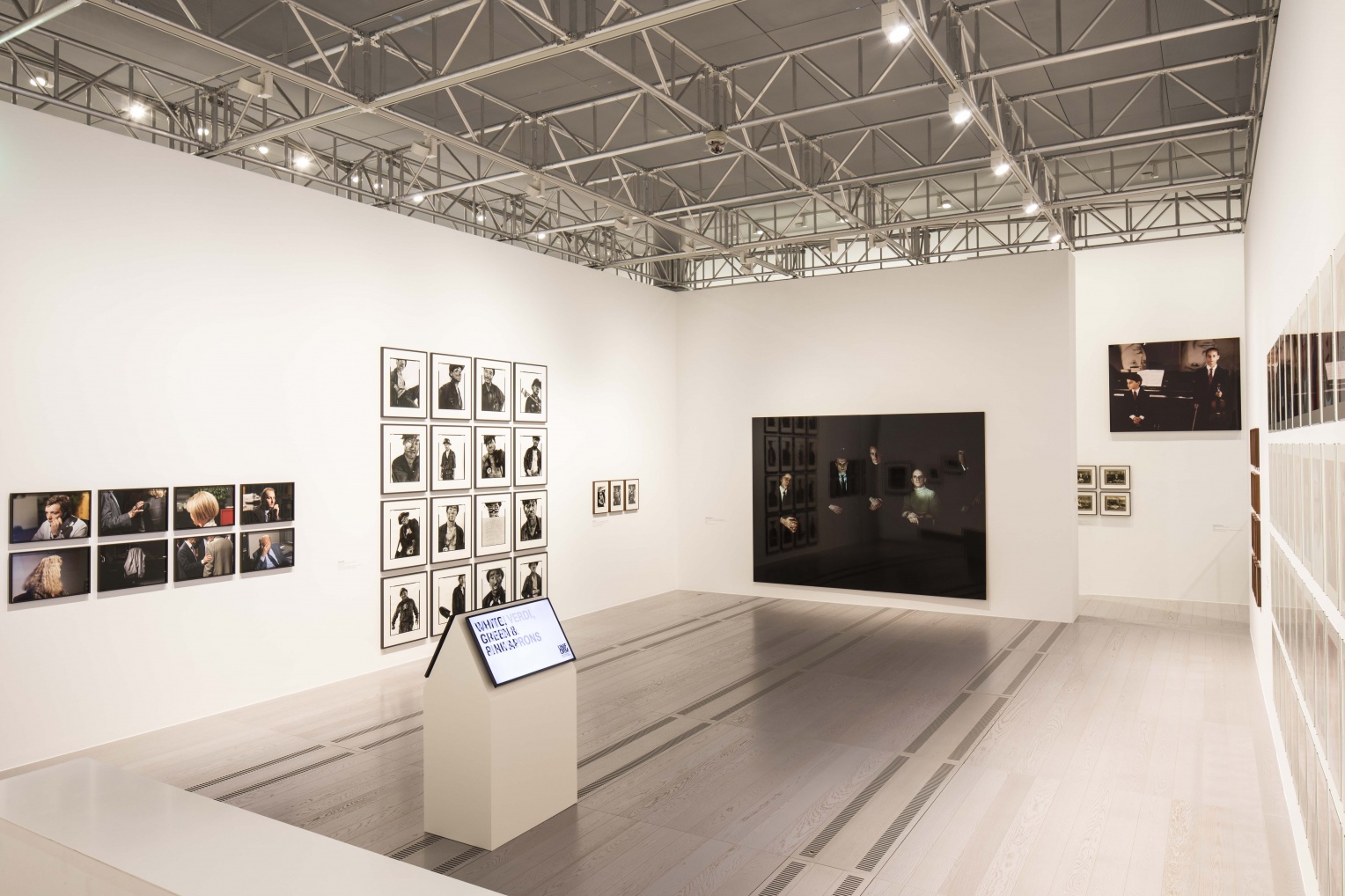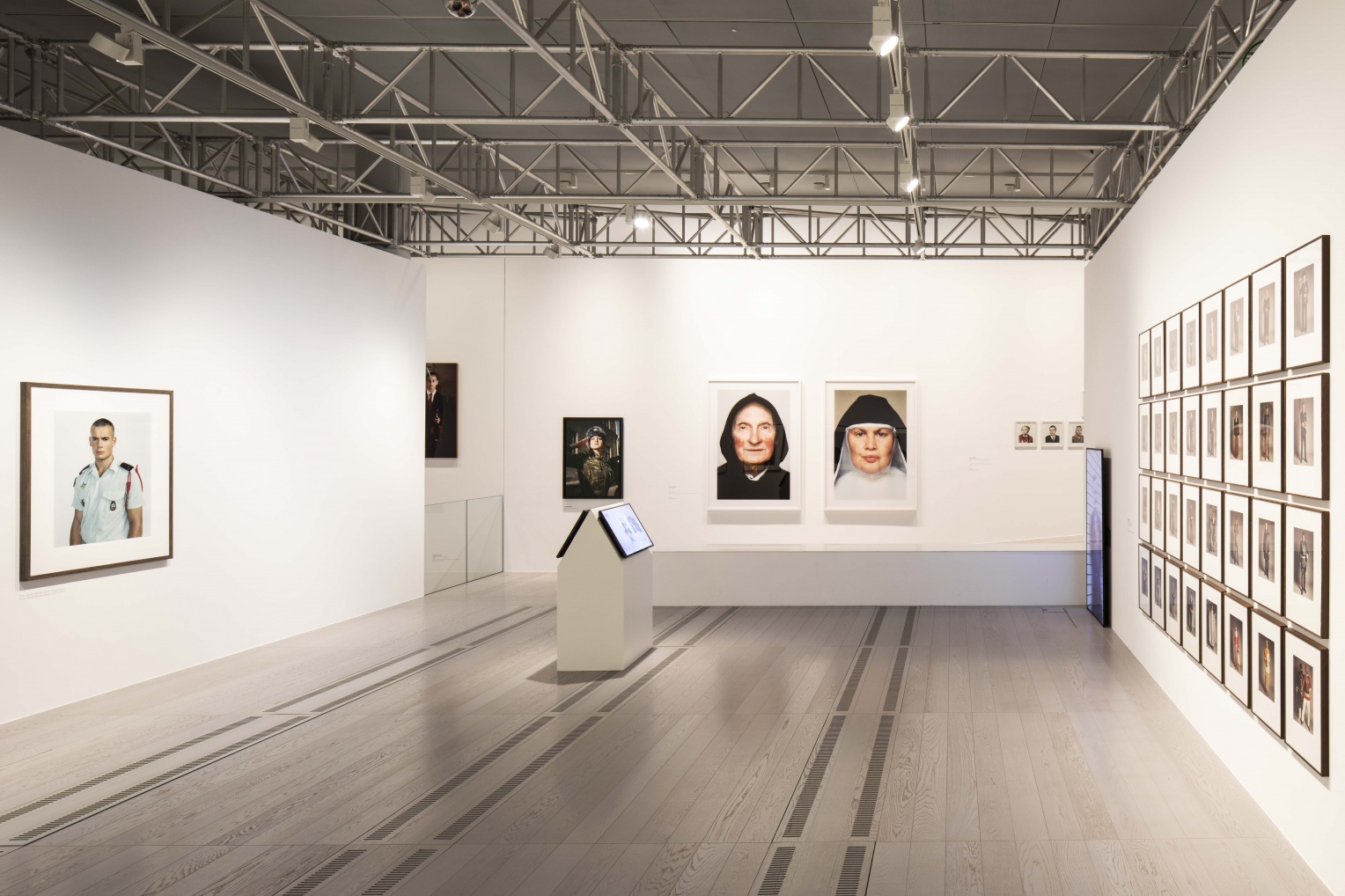Press conference:
https://www.facebook.com/MAST.Bologna/videos/609890393146210/
25 January – 3 May 2020 / MAST, Bologna, Italy
Uniform 1
Workwear, Costume, Uniform
Worldwide, a distinction is still made today between "blue collar worker" and "white collar worker", two terms that have become established in many languages of the industrialized world. We differentiate here between different types of professions and forms of work by means of the work dress, the often blue work suit or overall of the craftsmen and factory workers and the white collar as a symbol for suit, white shirt and tie, for the "administrative torso". The pink apron in turn stands for many service providers in the health care sector, the white apron for technicians, engineers, but also for butchers, bakers, cooks, printers, bookbinders and many others. The white apron has also served for decades as a visual gender and social distinction. In many cultural contexts it is always the women who wear a white apron first.
The exhibition uses photographs by various photographers to show different types of work clothes, different in time and use. A typical working jacket in the enchanting picture by Graciela Iturbide, for example, a cotton picker with long collecting bags bent over low by Ben Shan, a photograph of Walker Evans showing two coal workers at Havana harbour. The exhibition demonstrates the unifying, unifying pens, protecting work clothes for the group, the team, she shows the work overalls or suit torso as a visual feature of the position in the job and as a kind of brand of the company.
In this way, the exhibition also leads step by step from work clothes to uniforms. In Italian there are two words for this, „uniformi“ and „Divida”. One word emphasizes the unifying, the other the separating, the delimiting: They show the including and the excluding as two related, connected actions. Military and civilian uniforms have always influenced each other. Civilian uniforms signal membership of a community, be it a state authority, a corporative or religious group, a civic association or a private company. However, uniforms can also exclude, mark dividing lines and make social conflicts visible or even intensify them. Anyone who knows how to read their signs takes information from them about the rank, position, scope of duties, competencies and responsibilities of the person in uniform.
"Clothes make the man," as the German saying goes. And significantly the other way round in Italian: "L'abito non fa il monaco". With the opening to German meaning in "vesti un bastone e ti parrà un signore." One proverb speaks of the power of the surface, the appearance, the other of the power of the depth, the essence, the being. "Clothes make the man" or "L'abito non fa il monavo" are well-known proverbs that tell us about the relationship between being and appearance. In the history of fashion, women first wear male work clothes as camouflage to hide the fact that they are actually women, sometimes for the same reason as men, to be allowed to fight as soldiers in war. Later, however, they wear male work clothes as a liberation from the traditional strict costume regulations and the prescribed role models. In the women's fashion of the last two decades, the work dress, the cross-dressing, has repeatedly become the image of a new cool self-image of women.
The exhibition brings together many well-known, famous historical photographers and important contemporary photographers. Among them: Paola Agosti, Sonja Braas, Manuel Alvarez Bravo, Clegg&Guttmann, Hans Danuser, Barbara Davatz, Rinke Dijkstra, Walker Evans, Arno Fischer, Roland Fischer, André Gelpke, Graciela Iturbide, Tobias Kaspar, Herlinde Koelbl, Marianne Müller, Helga Paris, Paolo Pellegrin, Irving Penn, Andri Pol, Timm Rautert, Herb Ritts, Judith Joy Ross, August Sander, Ben Shan, Oliver Sieber, Albrecht Tübke, Florian van Roekel, Stephen Waddell and many others.

